[ad_1]
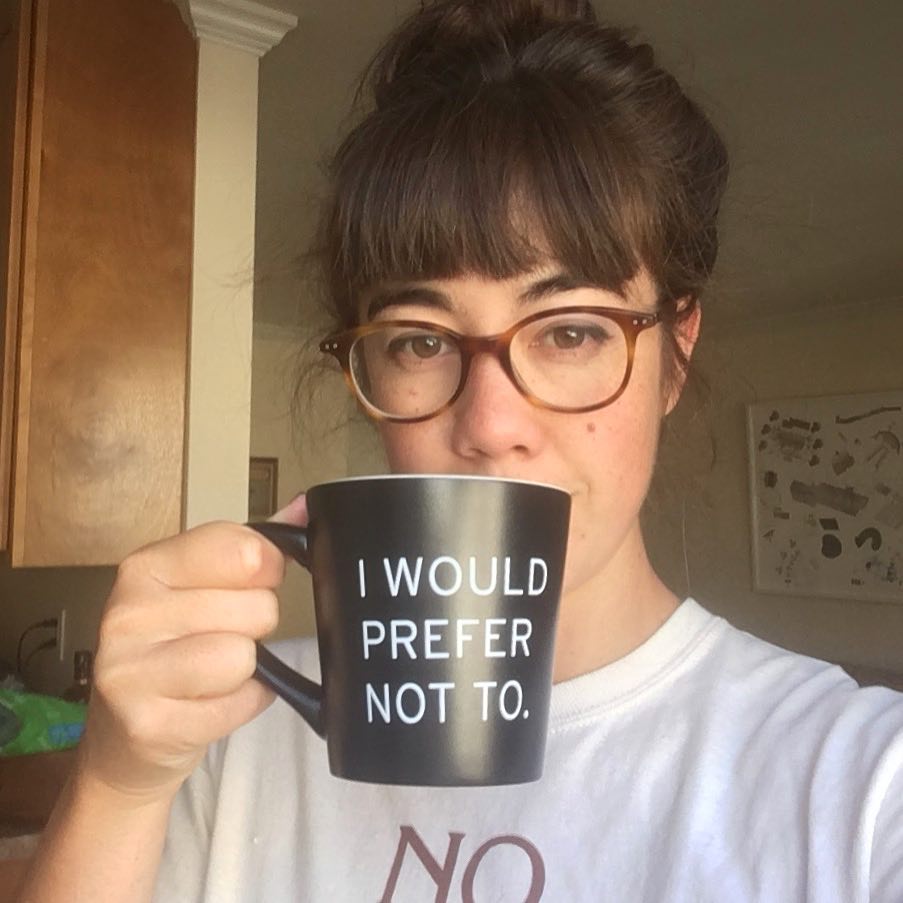
Jenny Odell is a multidisciplinary artist and writer based in Oakland, California, whose book How to Do Nothing: Resisting the Attention Economy was recently published by Melville House. Odell has been an artist-in-residence at the Yerba Buena Center for the Arts in San Francisco and shown work at the Marjorie Barrick Museum of Art, Las Vegas; La Gaîté Lyrique, Paris; and Google’s headquarters, among many other venues.
For her Consumer Report, Odell returns to her teaching job at Stanford after two weeks off. She also works on a column for SFMOMA’s Open Space platform about non-native species in her hometown, at times using the app iNaturalist to identify plants. There are also musings on the enduring popularity of The Office with young people, a long digression on a police auction website, and a visit to the rose garden that inspired her most recent book. In addition, Odell consults Twitter to find the correct terminology to describe friendly cats that approach humans for petting and then roll to the ground, “like a blob” (spoiler alert: the term is “social roll”). All that and more, below! —John Chiaverina
Sunday, March 31
10 a.m.
I wake up to a text from my partner Joe Veix with a video of a hardcore punk show he had just gone to in Japan. For the last few weeks, because of the time difference, he’s been going to sleep right when I’m waking up.
Today I need to take some photos of “my hill,” an area behind Mountain View Cemetery, for my last piece as columnist-in-residence at SFMOMA’s Open Space. Luckily, it’s a rare day of sun in what’s been an unusually rainy spring. Near my apartment I spot a weird-looking plant, and post a video of it to Twitter with the caption, “can someone tell me wtf this is.” By the time I’ve reached the end of the block, I have the answer, thanks to artist and curator Everest Pipkin. It’s a “fasciated flower,” a mutation where flowers grow in a line instead of from a point.

12 p.m.
As is my habit, I stop for a while in the rose garden near my house (the same garden that inspired How to Do Nothing). I’ve brought a book from the Stanford library, Bergson: Thinking Beyond the Human Condition by Keith Ansell-Pearson, and am already in danger of running out of post-it flags. I’m specifically reading this for ideas about time (or duration, as Bergson would put it); perhaps that’s why I subconsciously reserve this book for days when I have almost no schedule.
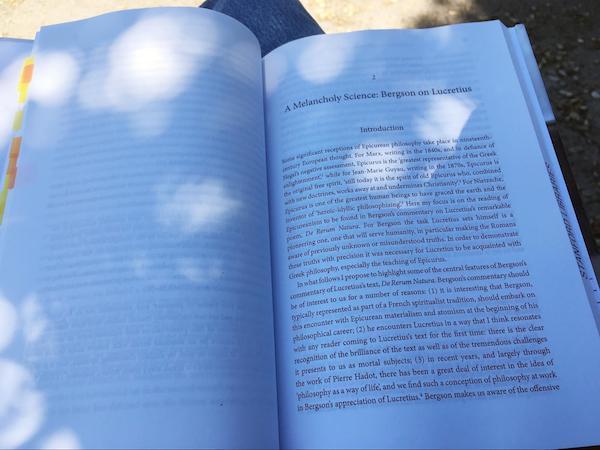
2 p.m.
Now full of ideas about how “time is not space,” I walk further on my deliberately winding route to the cemetery. My piece for Open Space will be called “A non-native hill,” referencing Wendell Berry’s “A Native Hill.” I arrive at my hill and take photos of all of the non-native species: eucalyptus, Tasmanian blackwood, poison hemlock, French broom, etc. For the ones I’m not sure of, I use the iNaturalist app, which lets you identify plants based on photo and location.

Currently part of the hill is being developed as an expansion of the cemetery. I scroll very far back in my Instagram to make sure I still have a photo of the first time I came here, when instead there were just mysterious ruins from the 1991 fire. I also take a minute to read part of the Environmental Impact Report for the expansion.
7 p.m.
I spend the rest of the evening frantically trying to get things together for my classes, which start tomorrow. Part of this involves finding relevant exhibitions at museums and galleries in San Francisco, since part of my class is a mandatory “independent field trip” to the city. This exercise always makes me realize how I don’t see enough exhibitions, and I resolve to set aside some days on my calendar for museum-wandering.
Monday, April 1
9 a.m.
I check the weather app and despair: back to rain.
10 a.m.
My wallet was stolen on the subway last week, so I call BART Lost and Found. The woman directs me to their website, where I fill out a form that feels mostly futile. The website mentions that unclaimed items go onto a police auction website. I then spend way too much time looking at things on the auction website, like a completely totaled pickup truck, or a designer sweater haphazardly arranged on a cheap dress form.

11 a.m.
Immediately upon walking outside, I smell smoke. It brings back memories of last summer, when we had what seemed like nonstop fires in California. I google “Oakland fire” and read a local news article about a warehouse that has caught on fire in East Oakland; luckily no was one harmed.
I teach on Mondays and Wednesdays this quarter, which means I can catch an Alan Watts lecture on KKUP (Cupertino public radio) on my commute to Stanford. The lecture is always preceded by an hour of “contemplative music,” and then introduced by a guy who speaks with ridiculously long pauses between every word. “And now….. a lecture…… by……… Alan………… Watts.”
Today’s lecture is called “the game of yes and no,” and is essentially about the ups and downs of life. It’s an appropriate thing to hear now that the weather has gone back to being dreary and I’m on way to work after two luxurious weeks.
6 p.m.
In the faculty lounge after class, I read “Why Courtrooms Are Kryptonite for Alex Jones,” an NYT opinion piece that Joe has sent me with the caption “hucksters.” Joe and I spend a lot of time talking about hucksters and all kinds of chicanery, hullaballoo, and pettifoggery.
10 p.m.
After a long night of wrangling enrollment priorities for my classes, I watch an episode of The Office. I recently had a conversation with Joe and some other friends about Michael Scott’s obnoxiousness and whether the show lets him off too easily. I have this theory that his character is almost a proto-Trump (confirmed for me by the episode where he’s preparing to give a lecture at Ryan’s business school and puts a copy of The Art of the Deal into his bag). I also find it interesting how popular Office memes are among my students.
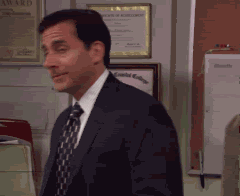
Tuesday, April 2
11 a.m.
I have a phone interview with a big publication about my book. The interviewer tells me about 13 Lakes by James Benning, which I make a note to watch later.
1 p.m.
Because of the wallet situation, I have to go to the DMV to replace my driver’s license. I’ve also run out of the spare cash I found in various pockets, so I can’t take the bus and have to use Lyft. My Lyft driver’s name is Dajohn and he is an artist too. He’s playing really good music, which I later regret not asking about.
I’ve prepared myself for the worst at the DMV, having never been to this location and because of a Yelp review where someone reported waiting from 9 a.m. to 6 p.m. I have coffee, water, snacks, and a Kindle, on which I am 56% of the way through Fred Turner’s Counterculture to Cyberculture. But instead I spend much of the time studying the so-bad-it’s-good graphic design of the ads and announcements on the DMV screens.
4 p.m.
With my mission accomplished, I decide to walk home since it’s stopped raining and it’s only a few miles. In Temescal I take a picture of a cat I’ve befriended and tweet it with the question, “what’s the word for when a cat runs directly toward you and you’re getting ready to pet it, but then at the last minute it rolls around on the ground like a blob?” Once again, the internet provides. The filmmaker Claire Weissbluth replies that it’s a “social roll.” I google this to find that the social roll is “a friendly, non-aggressive stance demonstrating comfort” (catwisdom101.com).
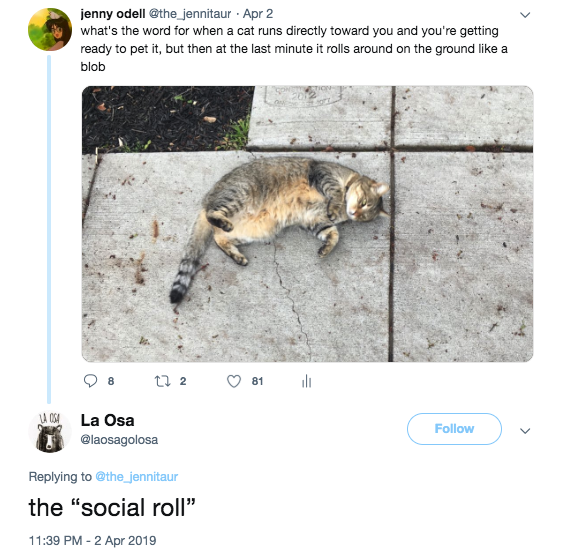
7 p.m.
Someone in my bird-themed group chat on Twitter posts a photo of a black-throated bushtit bird, which one member hilariously says “looks like it has ICP makeup on.”
8 p.m.
While making dinner, I listen to Chances With Wolves, an online radio show out of Brooklyn that I first found out about from my friend and designer extraordinaire, Helen Tseng (who also has her own local radio show, Astral Projection Radio Hour).
9 p.m.
I read an article on KQED Arts about how my friend Kate Rhodes “Accidentally Made a Viral Hit on Kid’s YouTube.” The video, which I had somehow not yet seen, is called “Finger Family Song Rhyme Game for Children Christmas Babies Fun,” and was inspired by James Bridle’s terrifying Medium piece from last year about algorithmically influenced children’s content on YouTube. Kate’s video, which currently has almost 12 million views, consists of mini Kate faces mapped onto fingers and singing happily / creepily at one another.
Wednesday, April 3
9 a.m.
I have another phone interview about my book. And I deal with some emails: students wondering about enrollment, book stuff from my publicist, follow-up questions from a previous interview, and the artist David Bayus confirming a guest lecture in my class. I also spend some time researching the non-native species from the cemetery hill for my piece, getting momentarily sidetracked by a hilarious video on Tavi Gevinson’s Twitter (“a woman who hates small talk”).
woman who hates small talk. when I asked instagram what her name should be, ritatewoldd said “tells people her name is Simone or Anais but her parents named her Jessica” and I think they are right
P.S. idk how to crop out my unbuttoned pants. c’est la vie! pic.twitter.com/VKDh8DkeG8
— Tavi Gevinson (@tavitulle) April 3, 2019
11 a.m.
I check weather and traffic before heading to Stanford. My car doesn’t have an aux input, which means I usually skip around a couple of radio stations until I find something good. But today I seem to be out of luck, so halfway through my commute I pop in a Chet Baker CD I got in high school.
1 p.m.
I see that an article has come out about my book, but I can’t read it because it’s in German.
6 p.m.
I have a chat on Facebook Messenger with a friend about how my interview in the Guardian (published yesterday) is “causing some controversy” on Facebook. I think he means it as a compliment, but it just gives me anxiety. I don’t look at Facebook much anymore since I installed the Facebook News Feed eradicator. More generally, never having written a book, I am dealing with an odd mix of emotions around the idea of a lot of strangers reading and discussing something very personal to me.

7 p.m.
On the drive home, I listen to a 1950s doo-wop show on KKUP called The Fly is Alive. The DJ comes on at one point to say, “If you like this kind of music… old music… KKUP has plenty of it.”
10 p.m. onward
I’m up late finishing “A non-native hill.” More researching of plants, relying heavily on the California Invasive Plant Council’s website as well as articles in Bay Nature on French broom and Bermuda buttercup.
Thursday, April 4
9 a.m.
I wake up to an email inviting me to speak at a tech conference whose main subject is automotive technology. Hmm….?
10 a.m.
“A non-native hill” is published, and I hear from a few people who also like to go on walks there. Andrew Alden, who runs a great blog called Oakland Geology and has written several posts about the rocks at the cemetery, comments: “at least most of the rocks are native.”
11 a.m.
My dad sends me a recording of a new song he’s written on the guitar. Before he got an iPhone, we would mostly communicate via email, and it would have been cumbersome to make and attach recordings. Now I get several of them a week. I like audio messages because you have to actually stop what you’re doing and take a moment to listen to them.
4 p.m.
I visit my good friend Dorothy Santos at Stochastic Labs in Berkeley, where she’s an artist-in-residence. My ostensible reason for being there is an interview for her podcast, PRNT SCRN, part of Art Practical, a San Francisco–based publication. But it’s also just good to hang out. Often when I see people IRL, they comment on how I only seem to exist on the internet. I’m also excited to see Stochastic Labs, since Taeyoon Choi from the School for Poetic Computation told me last year that I would like it.
After the interview, Dorothy gives me a tour of the house, which was originally built for a 19th-century ship captain and later belonged to Alice Waters. I meet one of the residents, Joel Simon, who created Facebook Graffiti, and is now working on Ganbreeder, a tool that lets users “breed” images using GAN’s (generative adversarial networks). Later on, I spend some time browsing through “discovered” images on the Ganbreeder website, like this eerie yet pleasing dog-flower thing.

6 p.m.
Liam O’Donoghue, a historian friend who runs the podcast East Bay Yesterday, sends me an article that April Glaser has written for Slate: “Plants and Birds Need Privacy Online, Too.” It’s about the unintended consequences of platforms like eBird, whose information can be used by poachers and thieves: “Thanks to the well-meaning efforts of citizen scientists and open data projects, what in a previous generation may have taken poachers years to map can now be downloaded in minutes.”
8 p.m.
It’s the 5-year anniversary of E.M. Wolfman General Interest Small Bookstore, so I meet some friends there. In the middle of a conversation, I notice a book on one of the shelves that I now plan to read after my Bergson book: Timefulness: How Thinking Like a Geologist Can Help Save the World by Marcia Bjornerud. Helen (the aforementioned designer) also gives me a copy of The Astrological Grimoire, a book she made with a collaborator. In an amazing coincidence, it will be released the same day as How to Do Nothing.
10 p.m.
A group of us decide to get dinner at Blind Tiger, a rarity in downtown Oakland because it has food past 10. When we arrive, they’re projecting The Matrix onto one of the walls. I get nostalgic for the first time I saw it as a 13-year-old, basically on accident because the movie I’d meant to see was sold out. Here in the restaurant, it’s a bit weird to be eating during the scene where Keanu Reeves’s mouth is sealing itself shut.
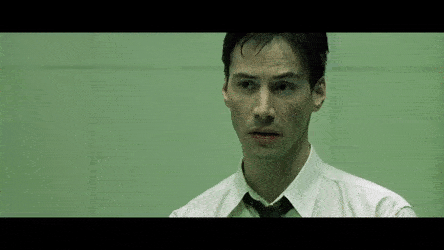
Helen tells us about how she recently discovered that the word “matrix” uses the same root (matr-) as matriarch, and that an older version of the word meant “womb.” We realize we must reevaluate the brilliance of the scene where Neo emerges from that womb-like egg thing.
12 a.m.
Joe sends me a photo of his toast from Japan, where he has just woken up.
[ad_2]
Source link

